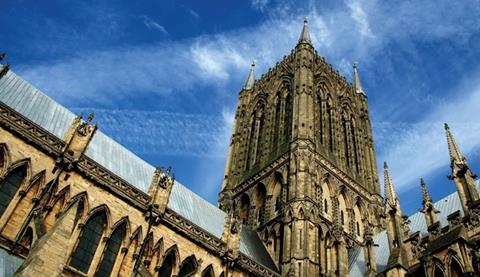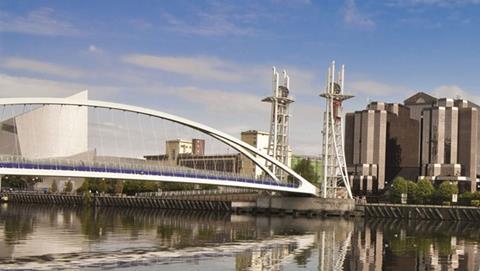Jonathan Foyle adores the back-of-an-envelope creativity that led to Lincoln cathedral, but is worried about the people who move to the nascent city at Salford Quays
My wonder is Lincoln cathedral, which is a most romantic building. I went to Lincoln art college and I remember walking past it on November afternoons and hearing the great bell booming through the mist. It occurred to me that the medieval order had stayed in place in Lincoln, with the cathedral on the hill remaining the dominant, static structure and other industry below it coming and going.
I most recently saw the cathedral as I scaled it for the second episode of Climbing Great Buildings. Close up, it looks like it’s been built on a bunch of spare Friday afternoons and you can tell they didn’t think about it on paper because there are all sorts of things wedged in.
But that is the strength of Lincoln: it’s highly experimental. There were some real geniuses at work and they were trying very new things.
What I really don’t like is blandness, but I probably find postmodern architecture the most annoying. It’s supposed to be light-hearted and humorous, but architects aren’t always the
best comedians.
Nonetheless, my blunder is Salford Quays, which I saw when I climbed Libeskind’s Imperial War Museum North. The museum is surrounded by Salford Quays, which is like a city in its birth pangs. There’s a huge amount of building still going on, but little sense of community. You are left wondering if people can take these buildings on and live with them and develop them into a place with identity, whereas at the moment you have a cutting-edge building in a city that is still developing its basic infrastructure. It made me ask a lot of questions about where architecture is going.

Wonder
Lincoln cathedral was started as a cruciform structure in 1072. Fire and earthquake damage in 1141 and 1185 respectively led to a major restoration, including the addition of an apse at the eastern end and five radiating chapels. The double arcading along the outer walls of the choir aisles is an example of the early English style.

Blunder
Salford Quays was built on the site of the Victorian Salford Docks, which closed in 1982. Construction by Urban Waterside began in 1985. One of the earliest completed buildings was Stirling and Wilford’s Lowry arts centre. The BBC is moving five of its departments to MediaCityUK, which is on the site.
Jonathan Foyle’s new series, People’s Palaces and Climbing Great Buildings, begin this month on BBC4 and BBC2. The conservationist also makes regular appearances on Time Team



























No comments yet